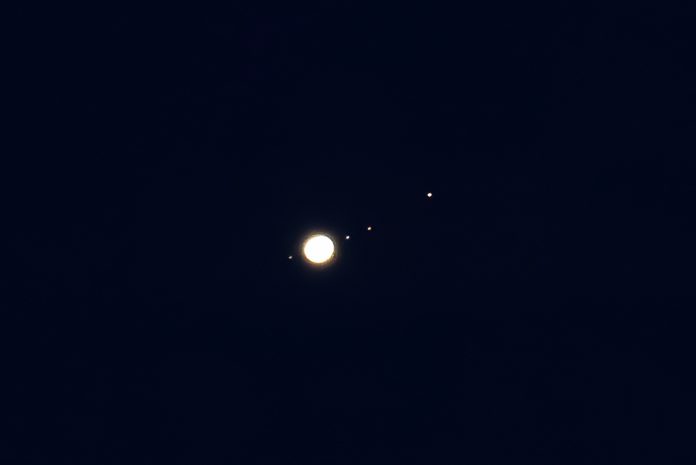Hubble recently found evidence of water vapour on Ganymede, Jupiter’s moon – using a mix of new and old observations
Ganymede is the largest moon in the solar system. Scientists already know that theoretically, it contains more water than all of the oceans on Earth.
But since the temperature on the surface is so low, the water remains frozen solid at most times of year. In addition – the frozen ocean is a whole 100 miles below the surface of the planet itself.
Life on Jupiter’s moon?
This hidden, frozen ocean is thought to be salty. This means that it is a potential location for life in our celestial neighbourhood.
This ESA (European Space Agency)’s upcoming mission, JUICE, stands for JUpiter ICy moons Explorer. It will launch in 2022 and arrive at Jupiter in 2029, where the craft will spend at least three years making observations of Jupiter and three of its largest moons – with particular emphasis on Ganymede as a potential habitat.
Now, scientists have found evidence of water vapours above the surface – creating fresh excitement about the possibilities of habitation.
The 2018 mission
As part of a large observing program to support NASA’s Juno mission in 2018, Lorenz Roth of the KTH Royal Institute of Technology in Stockholm, Sweden led the team that set out to measure the amount of atomic oxygen with Hubble.
The team combined the data from Hubble’s Cosmic Origins Spectrograph in 2018 and archival images from the Space Telescope Imaging Spectrograph (STIS) from 1998 to 2010.
“So far only the molecular oxygen had been observed,” Roth said.
“This is produced when charged particles erode the ice surface. The water vapor that we measured now originates from ice sublimation caused by the thermal escape of water vapor from warm icy regions.
“Our results can provide the JUICE instrument teams with valuable information that may be used to refine their observation plans to optimize the use of the spacecraft.”











